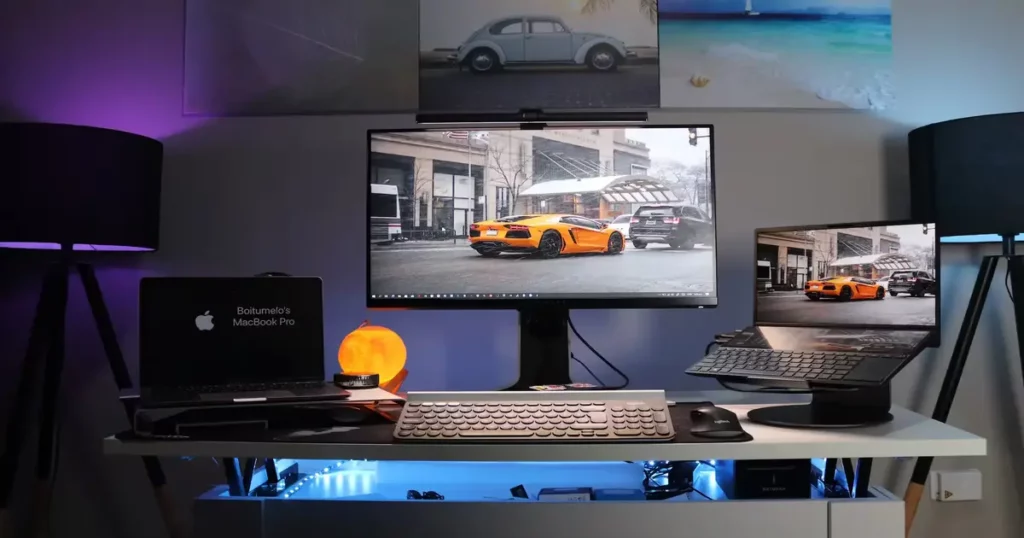Ultrawide Monitors are popular among gamers who want a super immersive gaming experience. The cool thing about these monitors is that they give you a wider view of your game because they’re way wider than regular ones. Most of these gaming monitors have a wider screen with a 21:9 shape and a 34-inch size. But some go even bigger with 38-inch and 45-inch screens. There are even these massive 49-inch ones with a super-wide 32:9 shape.
Now, the market for these ultrawide gaming monitors isn’t as varied as the market for smaller ones, but there are some good options out there for most gamers. One thing to keep in mind is your budget because these monitors come in a wide range of prices.
When you’re checking out a monitor for gaming, there are a couple of important things to think about. First, look at the response time. This is crucial for how well the monitor handles fast movements in games. Also, check out the VRR formats it supports to make sure it works smoothly with your PC. You might also want to think about input lag, but most of these monitors have low input lag, so it’s not a big worry.
So, bottom line – if you’re a gamer looking for an awesome experience, ultrawide monitors are worth checking out. Just keep your budget in mind, look at the response time, and make sure it plays nicely with your PC. You can also read about the all-new OnePlus Buds 3 on our website here.
Here are the top 5 Ultrawide Monitors that you can buy for an amazing gaming experience.
1. Dell Alienware AW3423DW
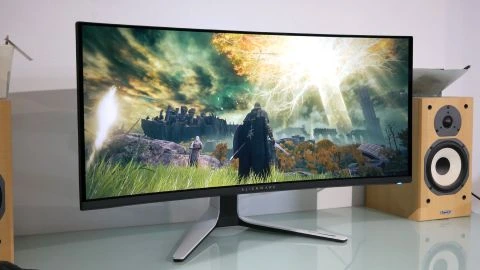
The top ultrawide gaming monitor we’ve checked out is the Dell Alienware AW3423DW. This monitor is fantastic for gaming, offering high-end performance and awesome picture quality. It’s got a 34-inch screen that’s curved, making the edges more visible, especially if you’re sitting close. What sets it apart is its super quick response time, meaning you won’t see any blurring behind fast-moving stuff in your games. Plus, it boasts a 175Hz refresh rate with native G-SYNC support, which is great if you’ve got an NVIDIA graphics card.
This monitor uses a QD-OLED panel, providing excellent performance with a fantastic contrast ratio in dark rooms and vibrant colors. If you’re considering another option, the Dell Alienware AW3423DWF is quite similar, also featuring a QD-OLED panel. The main difference is that it’s G-SYNC compatible instead of having native G-SYNC support. If you have an AMD graphics card, you could save some money with this one. However, if you use an NVIDIA graphics card, the AW3423DW is still the better choice for you.
There are other wide monitors with OLED screens, some even larger. Look at the Samsung Odyssey OLED G9/G95SC S49CG95, for example. It’s an extra-wide QD-OLED monitor with a super-fast 240Hz refresh rate, great for serious gamers. But it’s more expensive and has a much bigger screen than the Dell. If you’re interested in a 45-inch screen with a wide 21:9 shape, you might want to consider the LG 45GR95QE-B. However, keep in mind that it uses a regular OLED panel, so it won’t give you the same bright and lively colors.
2. MSI MEG 342C QD-OLED
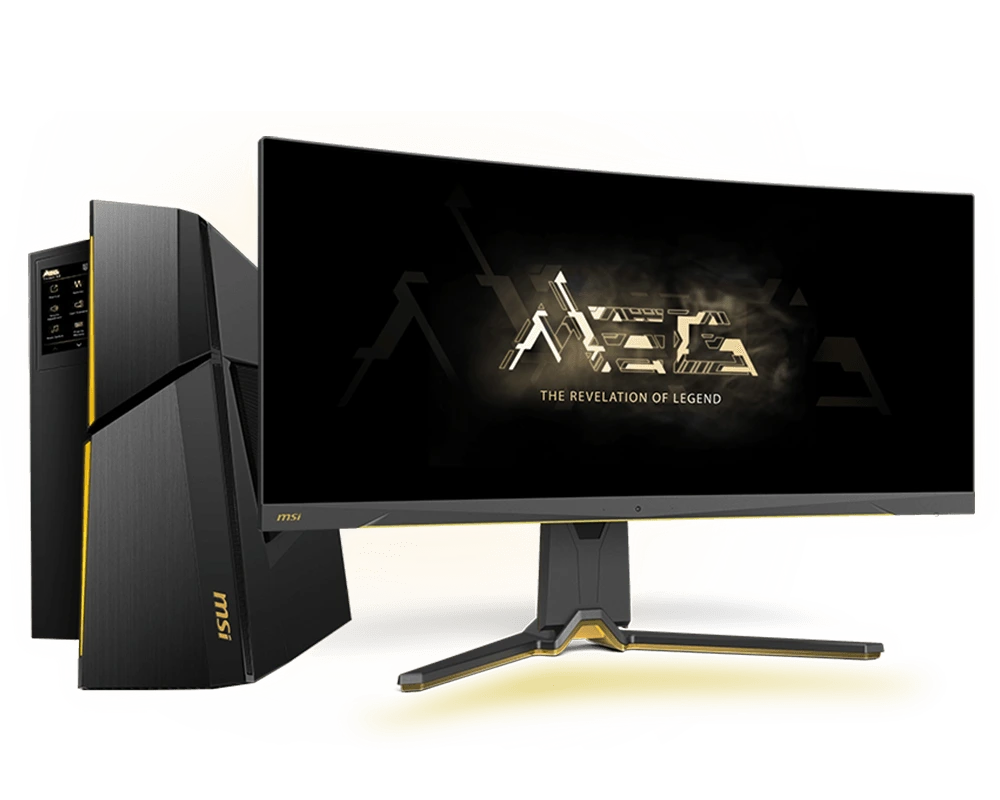
The Dell Alienware AW3423DW is a top-notch choice for gamers, especially if you’ve got an NVIDIA graphics card. But, if you’re looking to save some bucks, the MSI MEG 342C QD-OLED is a more budget-friendly QD-OLED option. Both use the same panel, so you won’t notice a huge difference in picture quality, though the Dell does shine a bit brighter, making highlights pop more.
Now, when it comes to features, Dell has native G-SYNC support, which is great for NVIDIA graphics card users who want the full benefits. The MSI isn’t officially certified for G-SYNC, but it still works fine, so you won’t face screen tearing on either monitor.
But, the MSI does have its perks. It comes with a KVM switch, making it a breeze to control two devices using the same keyboard and mouse. Additionally, it supports HDMI 2.1 bandwidth, a handy feature if you’ve got a modern graphics card that supports HDMI 2.1 – something the Dell monitor doesn’t have.
In short, while there are a few trade-offs with the MSI, it’s still a fantastic choice for gaming, offering good performance and some nifty features at a more wallet-friendly price.
3. LG 34GP83A-B
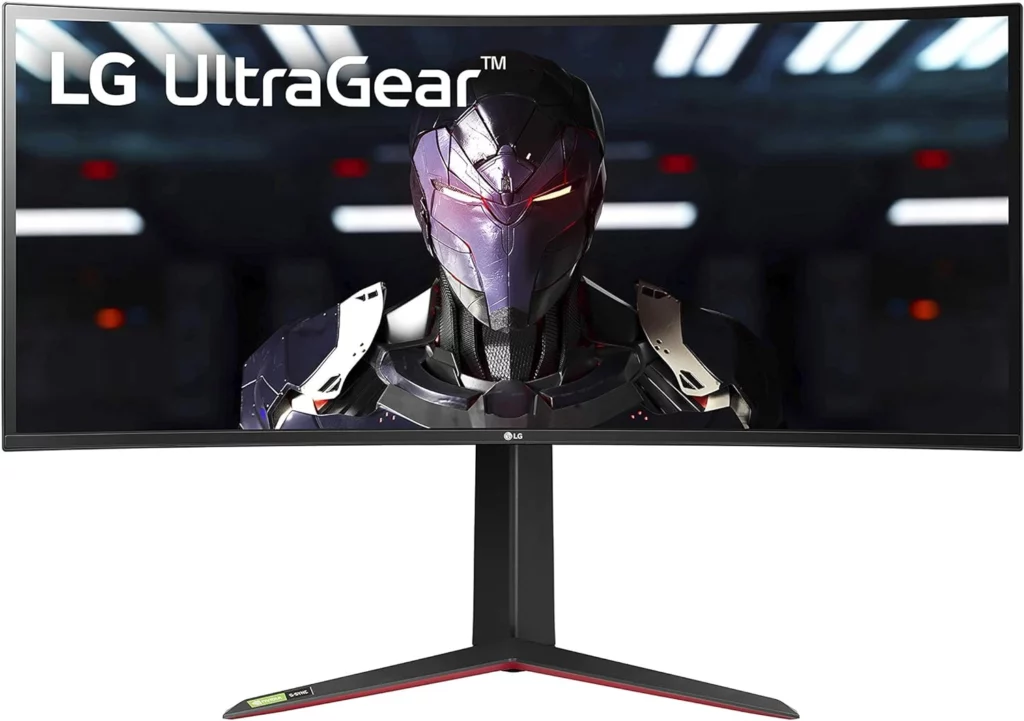
If you’re not dead set on having the absolute best performance and want a more budget-friendly option without a QD-OLED panel, you might want to check out monitors like the Dell Alienware AW3423DW or the MSI MEG 342C QD-OLED. However, if you’re interested in something even more cost-effective, take a look at the LG 34GP83A-B. It’s a bit different from the pricier models because it uses an LED-backlit LCD panel, which means the picture quality isn’t as top-notch – it can’t show perfect blacks or as vibrant colors. But, that’s the trade-off you make for a more affordable display. Still, it sports the same 34-inch size and 3440×1440 resolution, making it a solid choice for gaming.
This monitor comes with a native 144Hz refresh rate, and you can crank it up to 160Hz. Its motion handling is fantastic, making it a great pick for gaming with minimal motion blur, even at lower refresh rates. It also supports FreeSync VRR to cut down on screen tearing and is G-SYNC compatible. However, if you’re an NVIDIA graphics card user and prefer something with native G-SYNC support, you might want to consider the LG 34GP950G-B. Just be aware, it comes with a higher price tag.
4. Gigabyte M34WQ
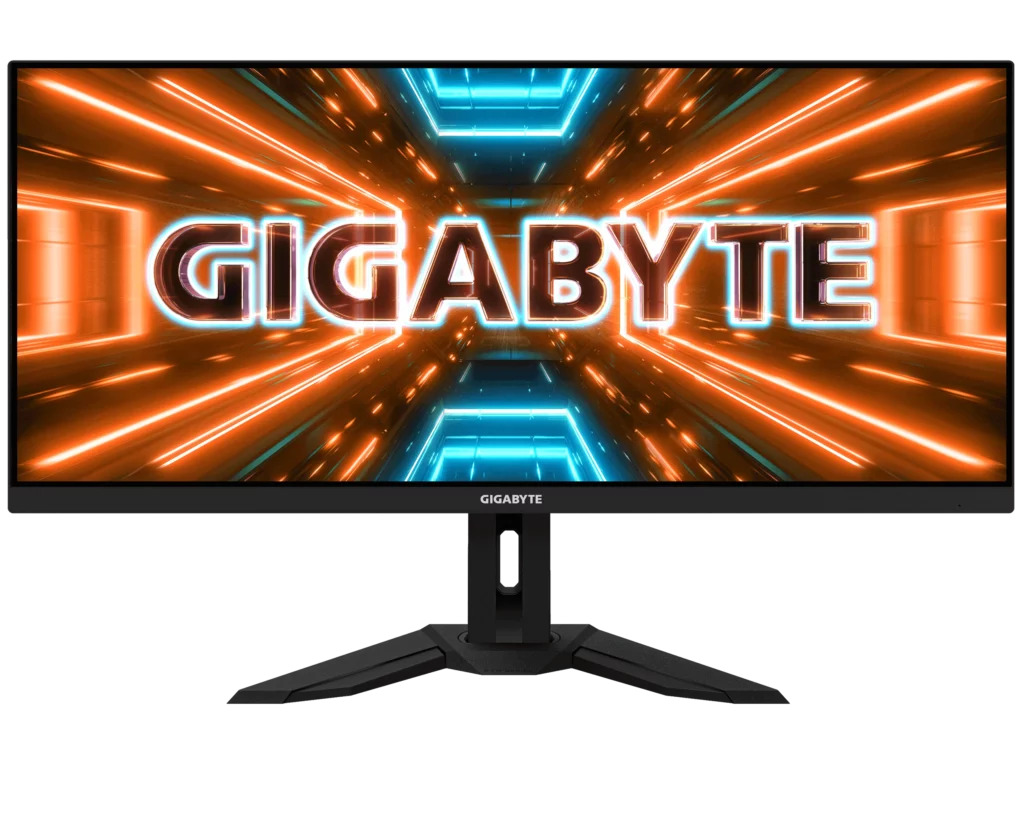
If the LG 34GP83A-B is a bit too pricey for your budget, consider the Gigabyte M34WQ as a solid choice in the lower mid-range price range. It shares similar features with the LG model, but there’s a catch – you can’t push its native 144Hz refresh rate beyond that, unlike the LG which can go up to 160Hz. Also, the motion performance isn’t as smooth due to a slower response time, leading to more smearing, especially when playing games at lower refresh rates. Despite this, it still offers a fast response time at higher refresh rates, delivering an overall great gaming experience.
This monitor is great for playing games together because it can swivel, which the LG one can’t do. It also has wide viewing angles, so the picture looks good even from the sides. It supports FreeSync VRR to prevent screen tearing, and even though it’s not officially certified by NVIDIA, it works well with NVIDIA graphics cards for G-SYNC compatibility. The Gigabyte M34WQ has some cool gaming extras, like virtual crosshairs and an ‘Eagle Eye‘ feature that zooms in during games to help spot opponents. Overall, it’s a good choice for budget gamers who still want a great gaming experience with some extra features.
5. Dell S3422DWG
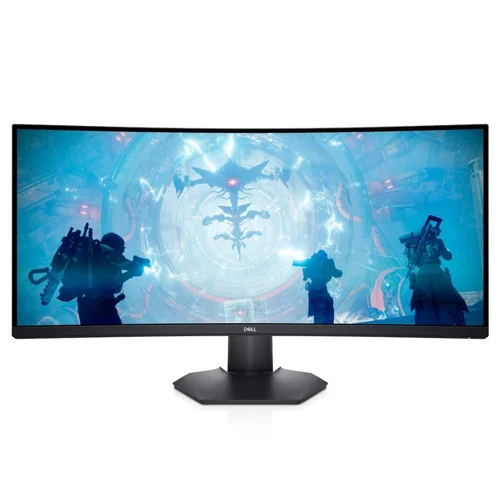
If you’re on a budget but still want an ultrawide gaming monitor, some options won’t break the bank. Take the Dell S3422DWG, for example. It’s a solid gaming monitor with a 144Hz refresh rate and a 34-inch screen, similar to the Gigabyte M34WQ. However, it comes with a slight trade-off in performance – you might notice more smearing with fast-moving objects. Despite this, the overall response time is decent, and it even has a backlight strobing feature to help reduce persistence blur. Although it has poorer viewing angles compared to the Gigabyte, the 1800R curve brings the edges closer, preventing them from looking too washed out.
The Dell S3422DWG supports FreeSync VRR and is G-SYNC compatible. However, there are some flicker issues at low refresh rates when G-SYNC is enabled. One advantage the Dell has over the Gigabyte is better picture quality, especially for HDR gaming. It boasts a higher native contrast ratio, creating deeper blacks in dark rooms, and it delivers good HDR brightness, making highlights stand out against the rest of the image. So, if you’re looking for an affordable ultrawide monitor with decent gaming features and enhanced picture quality, the Dell S3422DWG is worth considering.
Conclusion
In conclusion, when it comes to ultrawide gaming monitors, there are options for every budget and preference. The top choice for high-end performance is the Dell Alienware AW3423DW, ideal for NVIDIA users. If you’re on a budget, the MSI MEG 342C QD-OLED offers a more affordable option with similar quality. For a budget-friendly LED-backlit LCD choice, consider the LG 34GP83A-B. The Gigabyte M34WQ provides a mid-range option with gaming extras, while the Dell S3422DWG is a budget-friendly monitor with decent performance and enhanced picture quality for HDR gaming. Ultimately, the best pick depends on your needs and budget.



